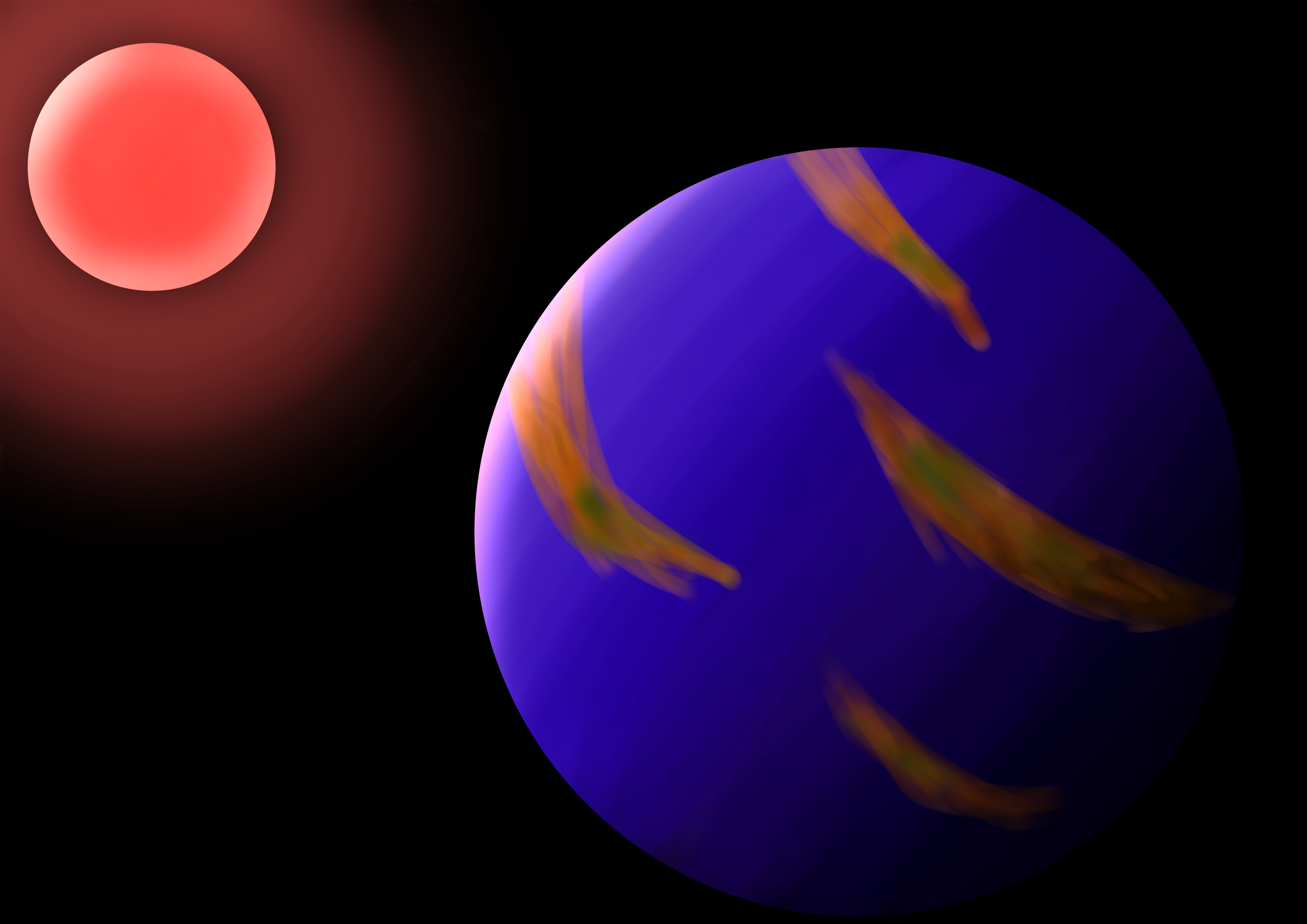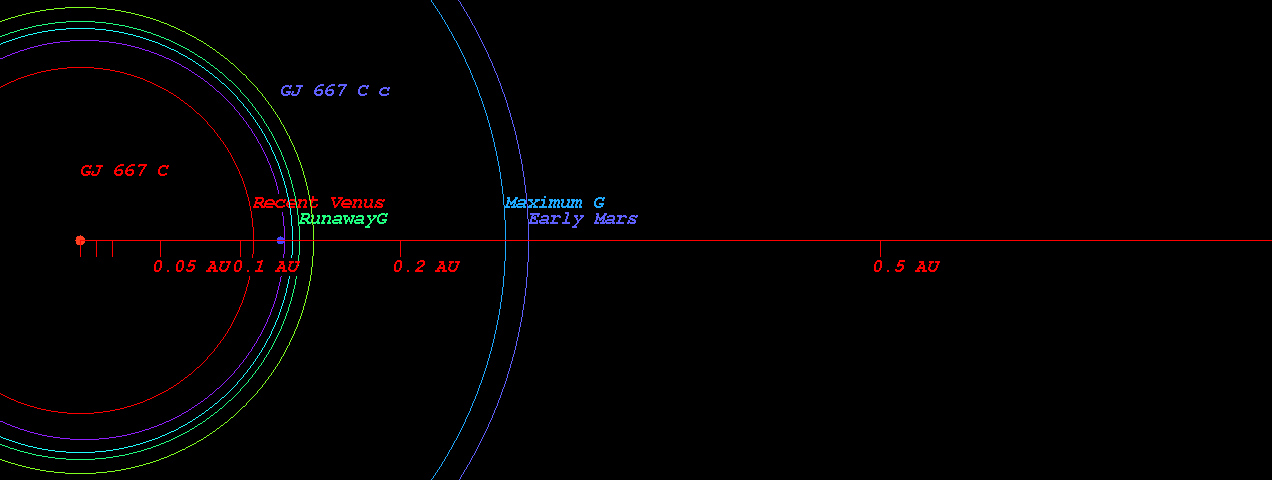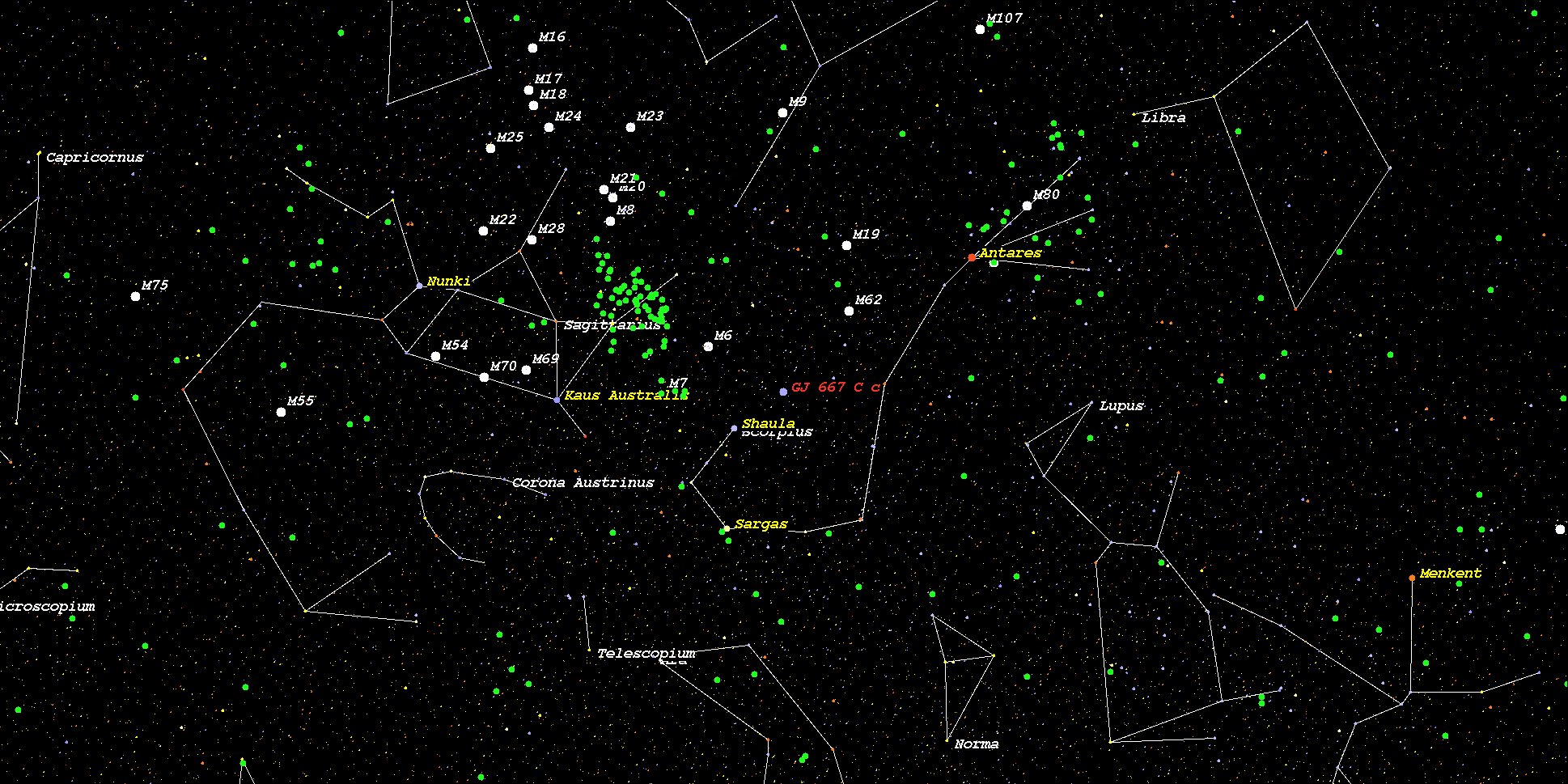 (Image of a tidally locked planet like GJ667Cc Credit: Natsuki Shirako, SGH Moriyama High School)
(Image of a tidally locked planet like GJ667Cc Credit: Natsuki Shirako, SGH Moriyama High School)

(Imaginary Image of GJ667Cc Credit: Miu Shimizu (SGH Moriyama High School) )
The planet, dubbed GJ 667Cc, orbits a red dwarf star 22 light-years from Earth, in the constellation Scorpio. A binary pair of orange dwarf stars are part of the same system.
The new planet has a mass 4.5 times that of Earth and orbits its host star every 28 days.
The red dwarf is relatively dim, so the planet receives slightly less light from its star than Earth does from the sun. But most of the star’s light is infrared, so the planet should absorb more of its incoming energy than Earth does from sunlight.
That means if the planet has a rocky surface—which is predicted for planets less than ten times Earth’s mass—and an atmosphere, it could support liquid water and maybe life said co-discoverer Guillem Anglada-Escudé, who conducted the work while at the Carnegie Institution for Science in Washington, D.C.
“If it has an atmosphere, it’s probably reddish all the time, because the star is really red,” Anglada-Escudé said. “It would be like being evening all the time.”
The host star GJ 667 C has an apparent magnitude of 10.2, with an absolute magnitude of 11.04. It is 0.33 times more massive and 0.34 times bigger compared with our sun. The surface temperature is 3600 K with it’ spectral type of M1.5v. In this planetary system, the extrasolar planet GJ 667 Cc orbits around the star GJ 667 C with its orbital distance of 0.125.
(梨元昴・山敷庸亮)
Reference
http://www.eso.org/public/archives/releases/sciencepapers/eso1328/eso1328a.pdf

GJ667Cc’s Habitable Zone (Kopparapu et al. 2013)

Location of GJ667C on the Stellar Map
For more information about GJ667Cc, please visit the ExoKyoto Database:
http://www.exoplanetkyoto.org/exohtml/GJ_667_C_cJP.html




